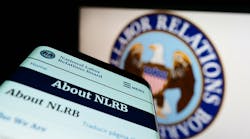If your company uses pre-employment physical stress tests for job applicants that result in the rejection of female applicants, you could be in a world of hurt if the Equal Employment Opportunity Commission (EEOC) finds out.
That’s what happened to Hirschbach Motor Lines, which used a pre-employment back assessment to screen and reject applicants it believed would be unable to work as truck drivers. Applicants were tested for their ability to balance and stand on one leg, touch their toes while standing on one leg, and to crawl.
EEOC claimed the company used this assessment to screen out applicants with pre-existing injuries and/or medical conditions after they had already received a conditional employment offer.
The company allegedly used the test results to rescind offers even though the applicants had already received medical certifications from the Department of Transportation authorizing them to drive a truck. (EEOC also discovered during its investigation that Hirschbach had a policy prohibiting its drivers from returning to work after missing work due to an injury or impairment unless they were 100% healed and free of any restrictions or limitations, which is illegal.)
The company eventually agreed to pay $3.2 million to a class of female applicants after the EEOC filed a lawsuit alleging the strength and fitness tests they took impacted women disparately. Earlier this year another case involving physical ability testing required by a police department resulted in a nearly $2.5 million settlement for female applicants.
EEOC’s pursuit of these cases highlights why it is important that employers understand the legal issues surrounding physical ability tests (PATs) and exercise diligence about selecting and validating such tests. “If a PAT has a disparate impact—for example, if women fail the PAT at a statistically significantly higher rate than men—an employer has the burden of demonstrating that use of the PAT is job-related and consistent with business necessity,” explain attorneys Mallory Stumpf and Sarah Smith Kuehnel of the Ogletree Deakins law firm.
Last year, EEOC announced its Strategic Enforcement Plan (SEP) for the next several years, which includes a continuing focus on class-based recruitment and hiring practices that discriminate against racial, ethnic and religious groups, as well as older workers, women and people with disabilities.
Since issuing the SEP, the agency has filed lawsuits across the country against employers, accusing them of creating illegal barriers to employment for women and individuals with disabilities. “These cases serve as important reminders that even the most well-intentioned employers should take a close look at the tools they are using to screen applicants for the various positions they are attempting to fill or run the risk of squaring off against the EEOC,” says attorney Aaron Gelb of the law firm of Conn Maciel Carey.
Make Sure You Do It Right
Stumpf and Kuehnel agree that PATs can be useful tools when hiring employees for physically demanding jobs and can improve worker safety. “Still, such tests are susceptible to claims of disparate impact discrimination, so employers that want to limit exposure may want to evaluate whether their tests are validated appropriately.”
They suggest that employers take formal steps to make sure any PAT they use is properly validated and is truly testing those physical abilities that workers really need on the job. The process often begins with a professional job analyst documenting the physical tasks necessary for the job. This can come from consultation with the appropriate employee safety experts and should include measurements of frequency, weight, duration, tools and distances involved in performing physical job tasks, the attorneys recommend.
PATs can then be designed to either simulate actual job tasks or test the minimum level of fitness/strength required to safely and effectively perform the job, Stumpf and Kuehnel note. “Either approach likely requires an expert validation to show that the PAT is predictive of the ability to perform the essential physical tasks of the job.”
“Establishing business necessity is a high standard that requires proof that the test has been validated specifically for the employer and is predictive of an individual’s ability to perform essential physical job tasks,” Stumpf and Kuehnel point out.
Because job requirements and qualifications can change, they also advise employers to periodically revalidate PATs to make sure that their tests are still measuring only necessary job skills and that any potentially less-adverse options have been considered.
Even if an employer can prove business necessity, use of a PAT may still be prohibited if an alternative practice could achieve the employer’s objectives with less adverse impact, Stumpf and Kuehnel stress.
“EEOC’s focus on challenging pre-employment testing highlights the importance of carefully validating such tests before implementing them and reexamining existing pre-employment tests to ensure they will withstand legal scrutiny,” they say. “Failure to do so can result in costly investigations, charges and lawsuits from the EEOC.”



